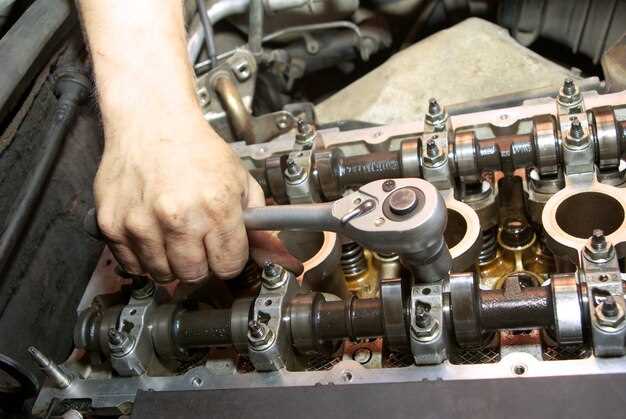
The Ford brand has long been synonymous with reliability and performance, yet even the most trusted vehicles can experience engine troubles over time. Identifying common engine problems early can save owners significant time and money in repairs down the line. Understanding these issues allows for informed decisions about maintenance and preventative measures.
In this article, we will delve into some of the most frequent repair challenges faced by Ford vehicle owners. From engine knocking to overheating, the symptoms can often be alarming, but fortunately, many of these issues have recognized solutions. We will provide valuable tips on diagnosing these problems and address effective repair strategies that can keep your Ford engine running smoothly.
Whether you are a seasoned car enthusiast or a casual driver, knowing what to look for can make a significant difference in managing your vehicle’s health. Our goal is to equip you with the necessary insights to tackle Ford engine problems proactively and confidently. Join us as we explore practical solutions that demonstrate how minor issues can be resolved before escalating into major repairs.
Identifying Common Symptoms of Ford Engine Issues
When owning a Ford vehicle, it is crucial to recognize the symptoms of potential engine problems early on to avoid costly repairs. The following signs may indicate underlying issues with your engine.
1. Unusual Noises: Sounds like knocking, ticking, or hissing can signal serious concerns. A knocking noise may indicate insufficient lubrication, while a hissing sound could point to a vacuum leak or overheating.
2. Warning Lights: Keep an eye on the dashboard warning lights. The check engine light is a critical indicator that shouldn’t be ignored. It could signify various issues ranging from minor to severe, necessitating immediate attention.
3. Decreased Performance: If you notice your Ford’s engine struggling to accelerate or experiencing reduced power, it may be suffering from fuel delivery issues, faulty spark plugs, or other performance-related problems.
4. Oil Leaks: Observing oil spots underneath your vehicle can indicate leaks in the engine. Low oil levels can lead to serious engine damage, making it essential to investigate the source promptly.
5. Overheating: An overheating engine can be caused by a malfunctioning thermostat, a leaking radiator, or a failing water pump. If the temperature gauge rises significantly, it is advisable to stop driving and assess the issue.
6. Excessive Exhaust Smoke: Different colors of smoke can signify various problems. Blue smoke may indicate burning oil, white smoke suggests coolant leakage, and black smoke points to excess fuel combustion.
7. Poor Fuel Economy: A sudden drop in fuel efficiency can be a sign of engine troubles. Issues such as clogged air filters or malfunctioning sensors can lead to increased fuel consumption.
By staying alert to these symptoms, you can take proactive steps for necessary repairs, ultimately extending the life of your Ford engine. Early diagnosis not only improves performance but also saves on future repair costs.
Step-by-Step Guide to Diagnosing Ford Engine Malfunctions

Diagnosing engine malfunctions in Ford vehicles requires a systematic approach to identify issues accurately. Follow these steps for an effective assessment.
1. Gather Information: Start by collecting details about the symptoms. Note any unusual noises, warning lights, or performance issues. Speak with the vehicle owner to understand instances when problems occur.
2. Conduct a Visual Inspection: Open the hood and look for obvious signs of trouble. Check for leaks, damaged hoses, frayed wires, and corrosion. Ensuring that all components are secured can prevent further complications.
3. Check Engine Codes: Use an OBD-II scanner to retrieve diagnostic trouble codes (DTCs). These codes provide insights into possible areas of concern within the engine. Note down the codes for further investigation.
4. Test Engine Components: Systematically test critical components such as spark plugs, ignition coils, fuel injectors, and the air intake system. Use appropriate tools like a multimeter or fuel pressure gauge to assess functionality.
5. Perform a Compression Test: This test helps determine the condition of the engine’s internal components. A significant drop in compression may indicate issues with piston rings or valves. Record your readings for analysis.
6. Inspect the Fuel System: Ensure the fuel pump is functioning correctly and that there are no blockages in the fuel lines. A clogged fuel filter can lead to poor engine performance and should be checked or replaced if necessary.
7. Evaluate the Exhaust System: A blocked catalytic converter can cause performance issues and trigger warning lights. Inspect the exhaust system for signs of damage or blockages.
8. Test for Vacuum Leaks: Use a smoke machine or spray soapy water around vacuum hoses and intake manifold gaskets. Listen for hissing sounds or observe bubbles forming to identify leaks.
9. Review Electrical Connections: Ensure all electrical connections are clean and secure. Faulty sensors can cause poor engine performance. Test crucial sensors such as the mass air flow (MAF) and throttle position sensor (TPS).
10. Document Findings: Keep a detailed record of all tests conducted, findings, and any repairs made. This documentation will assist in future diagnostics and ensure comprehensive repair solutions.
By following this structured approach, you can effectively diagnose engine malfunctions in Ford vehicles, leading to precise repairs and enhanced engine performance.
Practical Repair Tips for Common Ford Engine Failures

Ford engines are known for their reliability, but like any mechanical component, they can develop issues over time. Here are some practical repair tips for addressing common engine failures.
First, if you encounter overheating, check the coolant levels and inspect for leaks. A faulty thermostat or a clogged radiator can also cause temperature issues. Replace the thermostat if it’s stuck closed, and flush the radiator to remove any debris.
For problems with engine misfiring, inspect the spark plugs and ignition coils. Worn spark plugs can lead to poor performance and increased emissions. Replace them with high-quality alternatives recommended for your specific Ford engine model.
If you experience excessive oil consumption, check for leaks around the oil pan and valve cover gaskets. Additionally, worn piston rings may contribute to this issue. Conduct a compression test to determine the integrity of the rings and consider replacing them if necessary.
In cases of rough idling, start by cleaning the throttle body and mass airflow sensor. Dirt accumulation can disrupt airflow and affect engine performance. Ensure all vacuum lines are intact; damaged hoses may lead to air leaks and cause instability.
A check engine light could indicate various problems. Use an OBD-II scanner to retrieve the error codes. Address the specific issue indicated, as ignoring these warnings can lead to more significant engine damage over time.
Finally, always keep your engine oil changed at recommended intervals. Fresh oil lubricates moving parts effectively, reducing wear and improving overall engine health. Consult your Ford owner’s manual for guidelines on oil change frequency and the type of oil to use.



